-
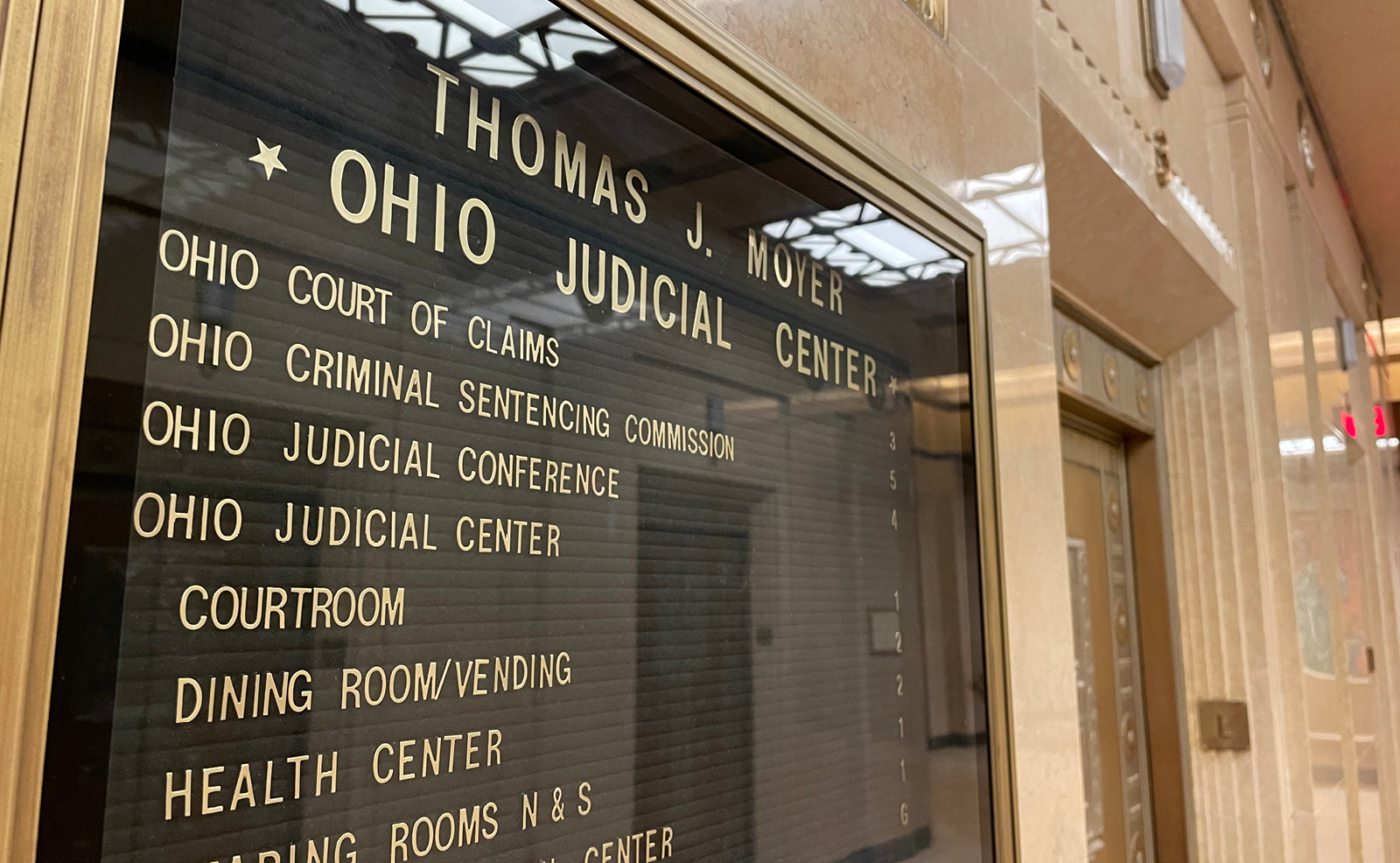
The Ohio Supreme Court’s first-floor elevator lobby is no ordinary one. Housing eight elevators, it is adorned with visual riches – in marble, bronze, and nickel, from ornate mosaics to meticulously designed metal molds – all displaying a beautiful sampling of the building’s distinctive design. Within the art lives stories – expressing the artistic styles chosen by those who constructed the building as well as the ancient myths that resonate with Ohio’s history.
-
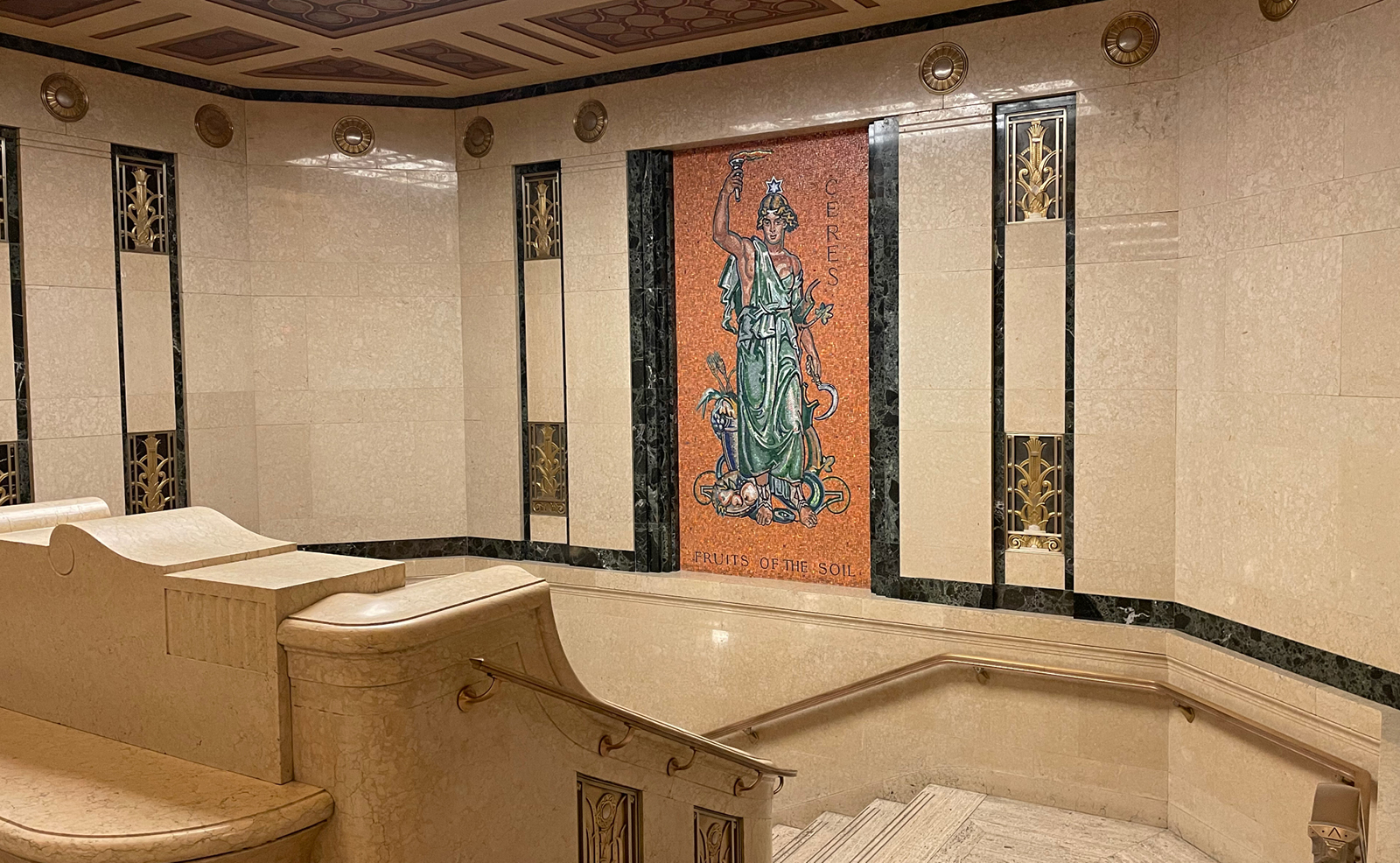
Each end of the elevator lobby is anchored by massive, intricate mosaics. At the south side, above a marble stairwell, stands Ceres, goddess of agriculture and grain in Roman mythology. The word “cereal” is derived from her name, and a bushel of grains is shown at her side. The mosaics of Ceres and Vulcan, who resides at the lobby’s other end, were designed by German artist Rudolf Scheffler. He shared his artistry in at least seven Ohio projects, including murals and mosaics for four churches.
-
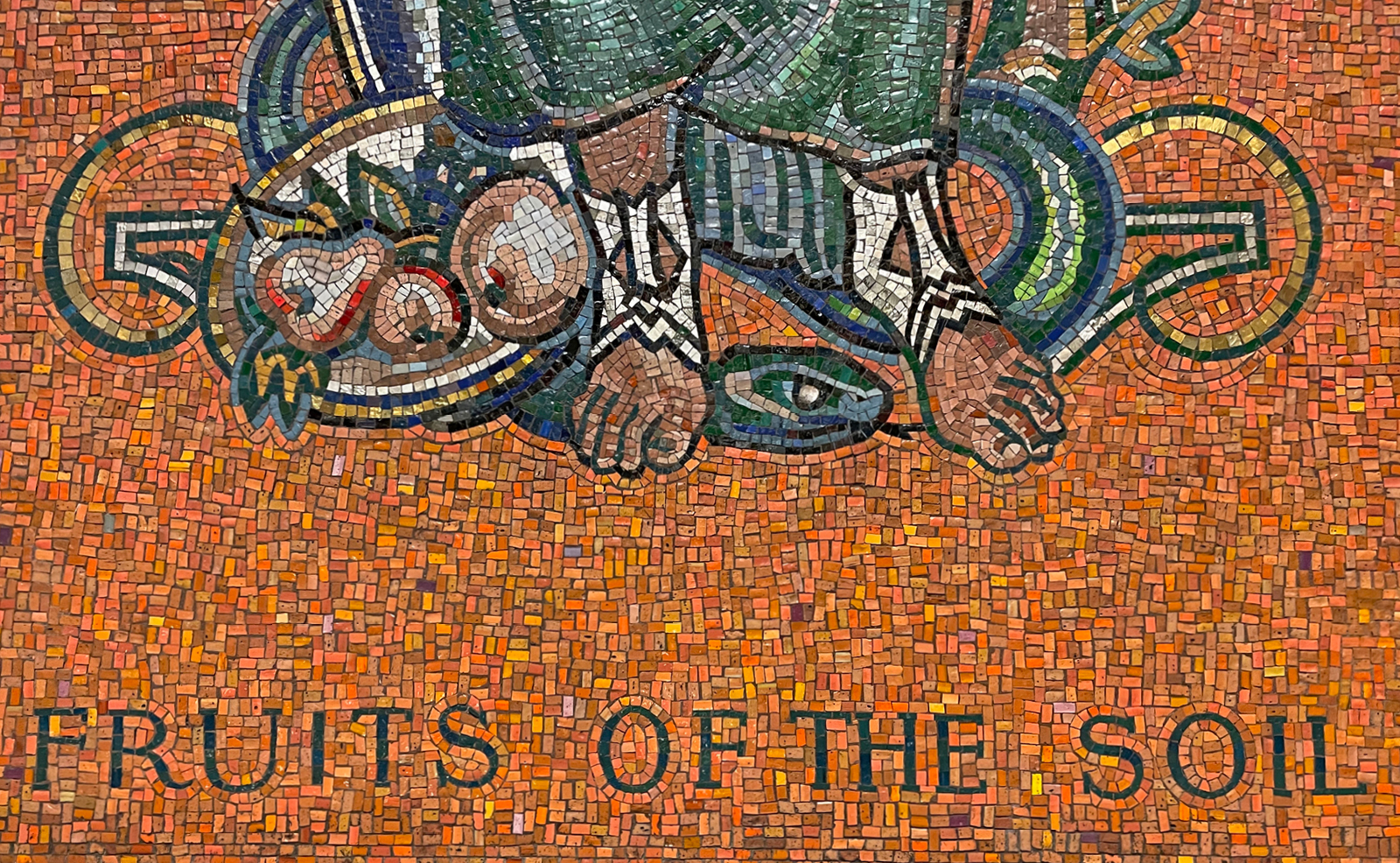
At Ceres’ feet rests a platter of fruit, along with the words “Fruits of the Soil.” She stands on a serpent. The story of Ceres is one way of accounting for the change in the seasons, and the snake may represent a spring-like renewal of life because it sheds its skin. A leaf-and-plant motif is visible around the goddess. This type of decor and the mosaic convey agriculture’s centrality to Ohio’s economy.
-
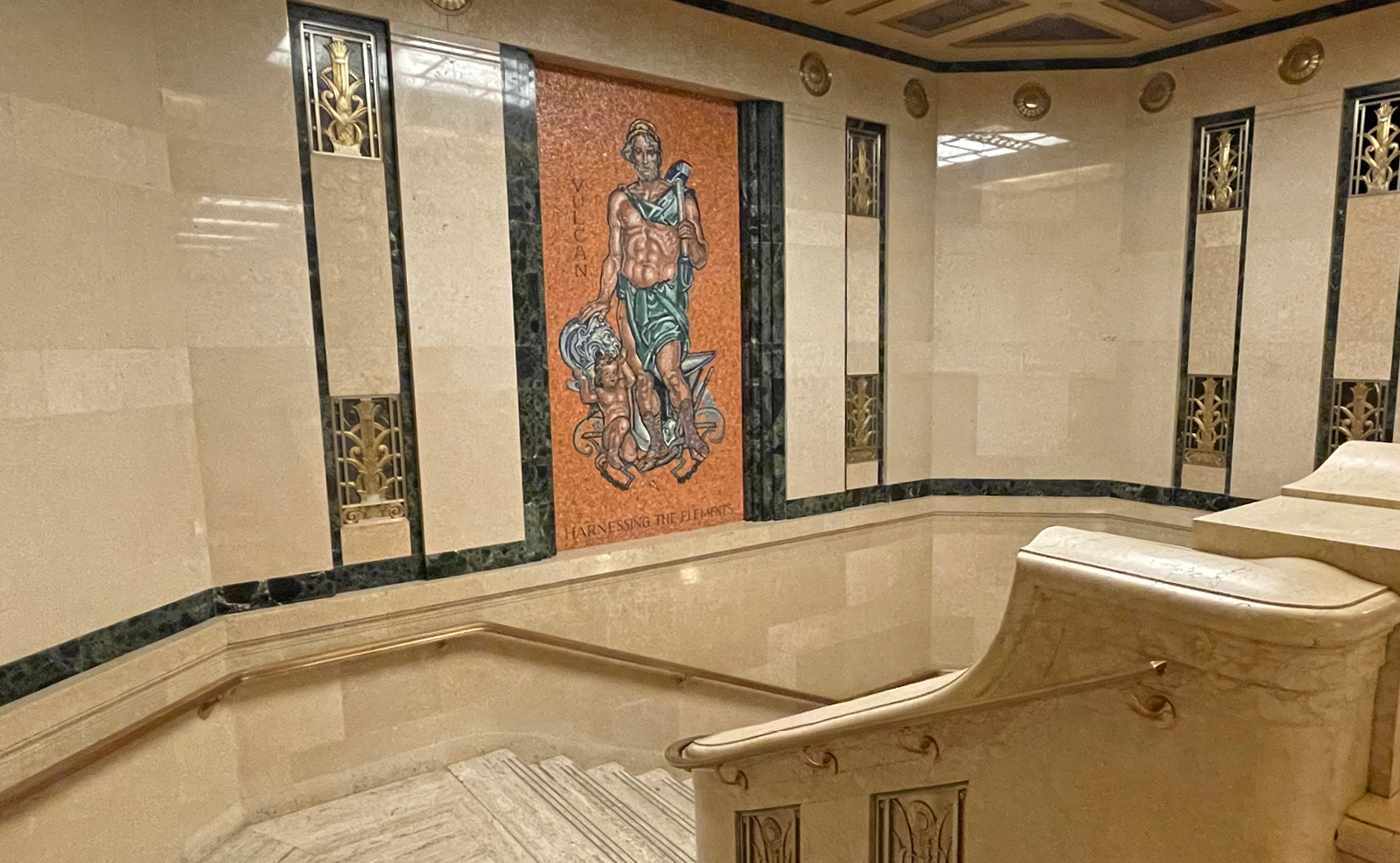
Positioned at the elevator lobby’s north side is Vulcan, the Roman god of fire, volcanoes, metalworking, and craftsmanship. Carrying a sledgehammer and standing in front of an anvil, Vulcan symbolizes Ohio’s industrial and manufacturing resources. The phrase “Harnessing the Elements” may refer to the use of fire and the tools in making steel, a key industry in the state.
-
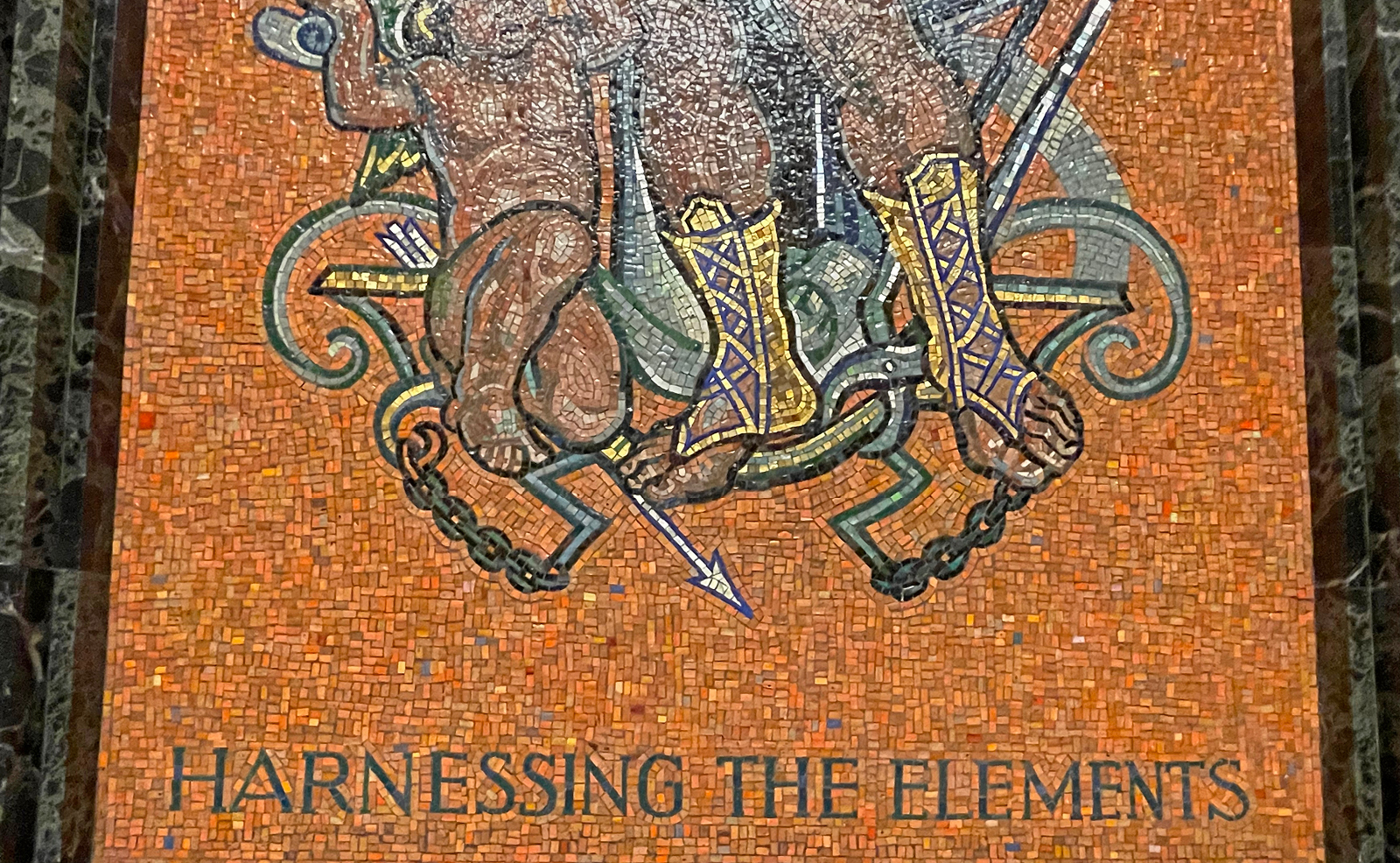
Court staff calculated that each mosaic in the elevator lobby contains at least 20,000 tiles. The cherub at Vulcan’s feet perhaps alludes to his wife, Venus, often considered the goddess of love. Ceres and Vulcan are frequent subjects in murals of the Beaux-Arts movement – a French style emphasizing a combination of classical and Renaissance styles. Richly decorated interiors are a hallmark of Beaux Arts.
-
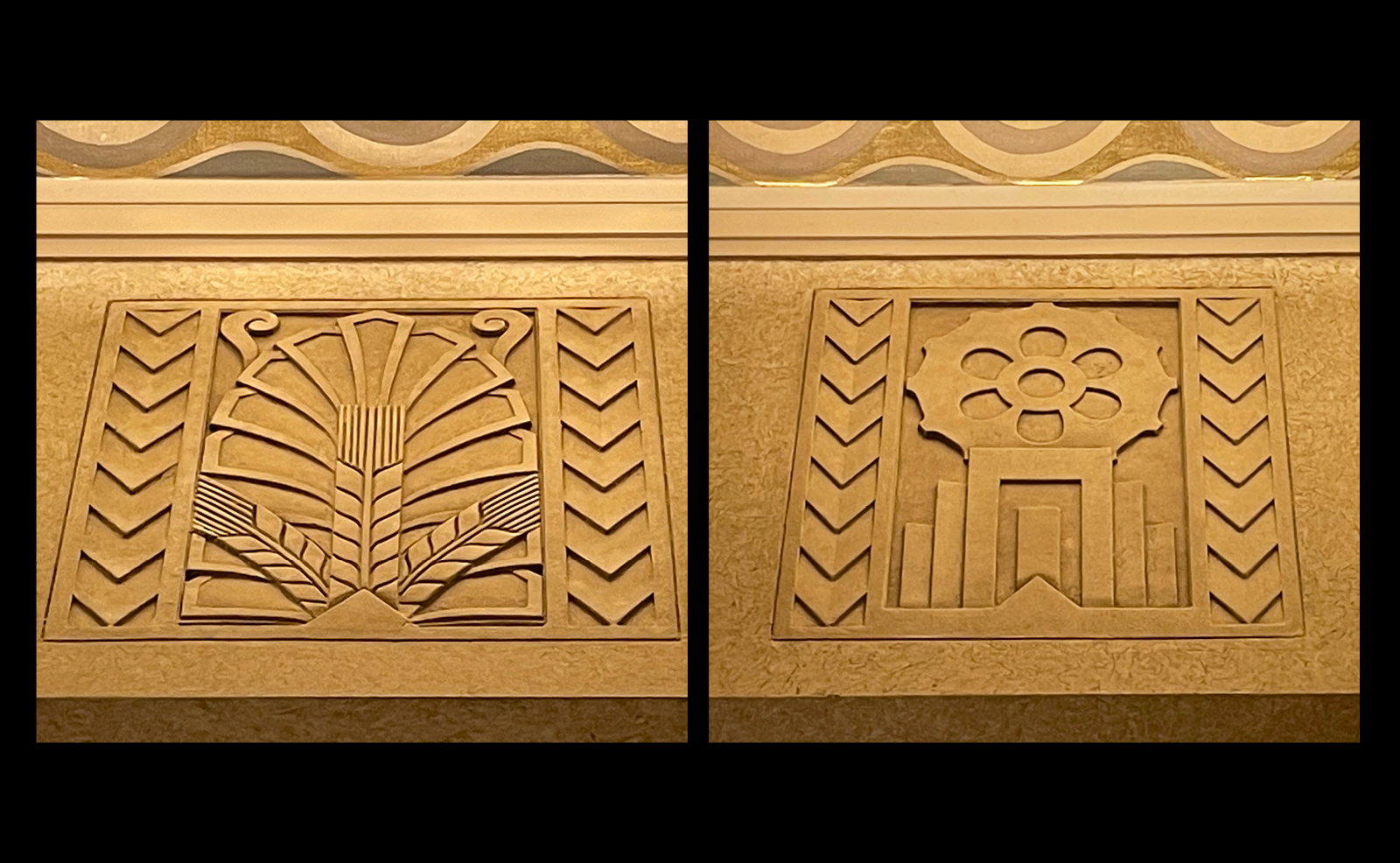
Opportunities to carry the lobby’s themes rarely were missed. The lobby’s cornices, the ornamental moldings near the ceilings, even echo the ideas of the room. On Ceres’ side of the lobby, plaster cornices of cornstalks (left) pay tribute to Ohio’s farming communities. Near Vulcan are cornices decorated with gears (right), representing manufacturing.
-
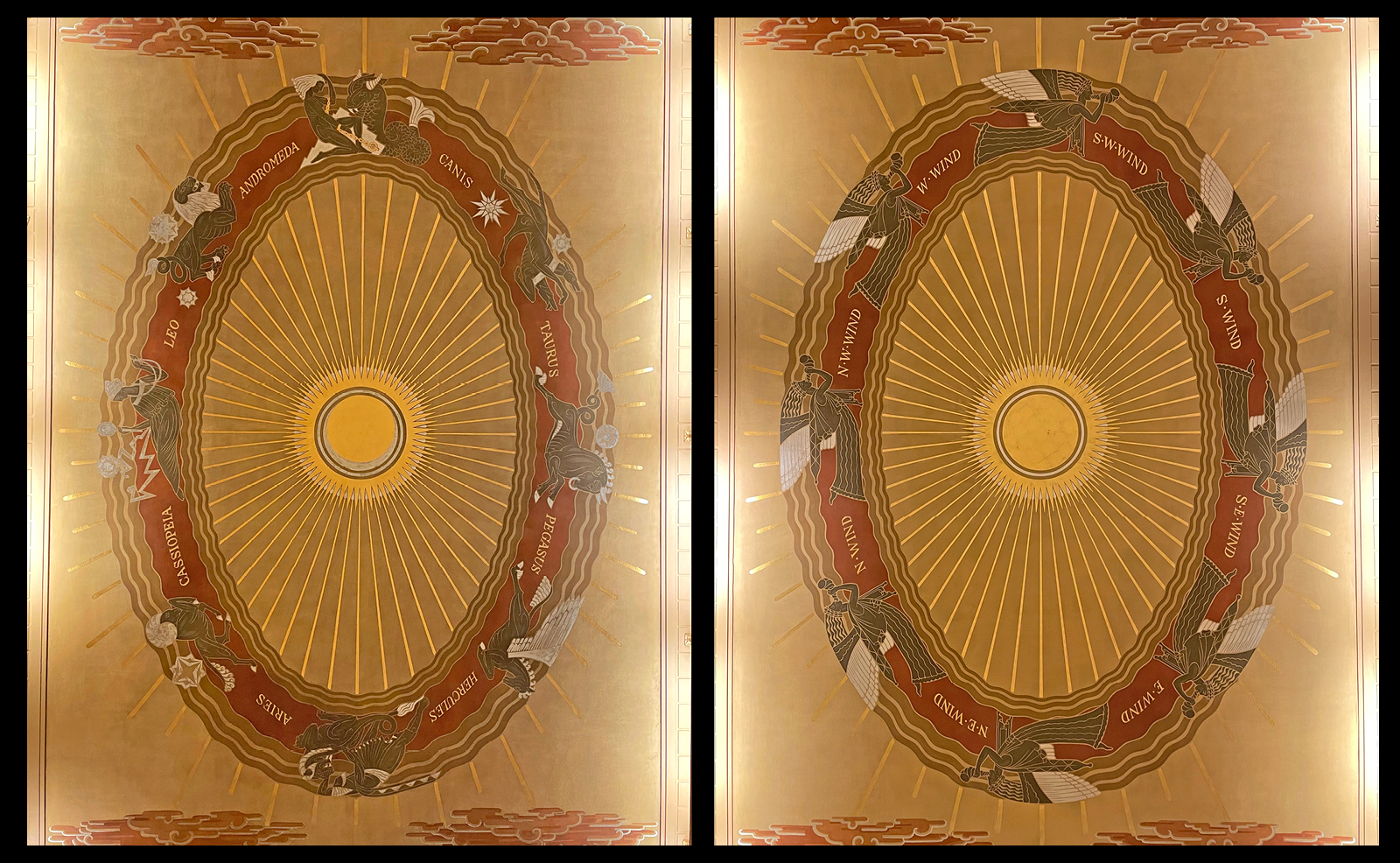
The ceiling near Ceres (left) reveals eight constellations in the zodiac. Farmers relied on constellations as planting and harvesting signals. Eight winds are shown on the ceiling (right) spanning the foyer in front of Vulcan. These sizable red-and-gold paintings, roughly 13 feet by 9 feet, tie together different aspects of nature that can produce a successful agricultural community. The Rambusch Decorating Company, founded in 1898 by Danish immigrant Frode Rambusch and still operating, was hired to create the striking decorations and also restored them after the 1932 natural gas explosion in the building.
-
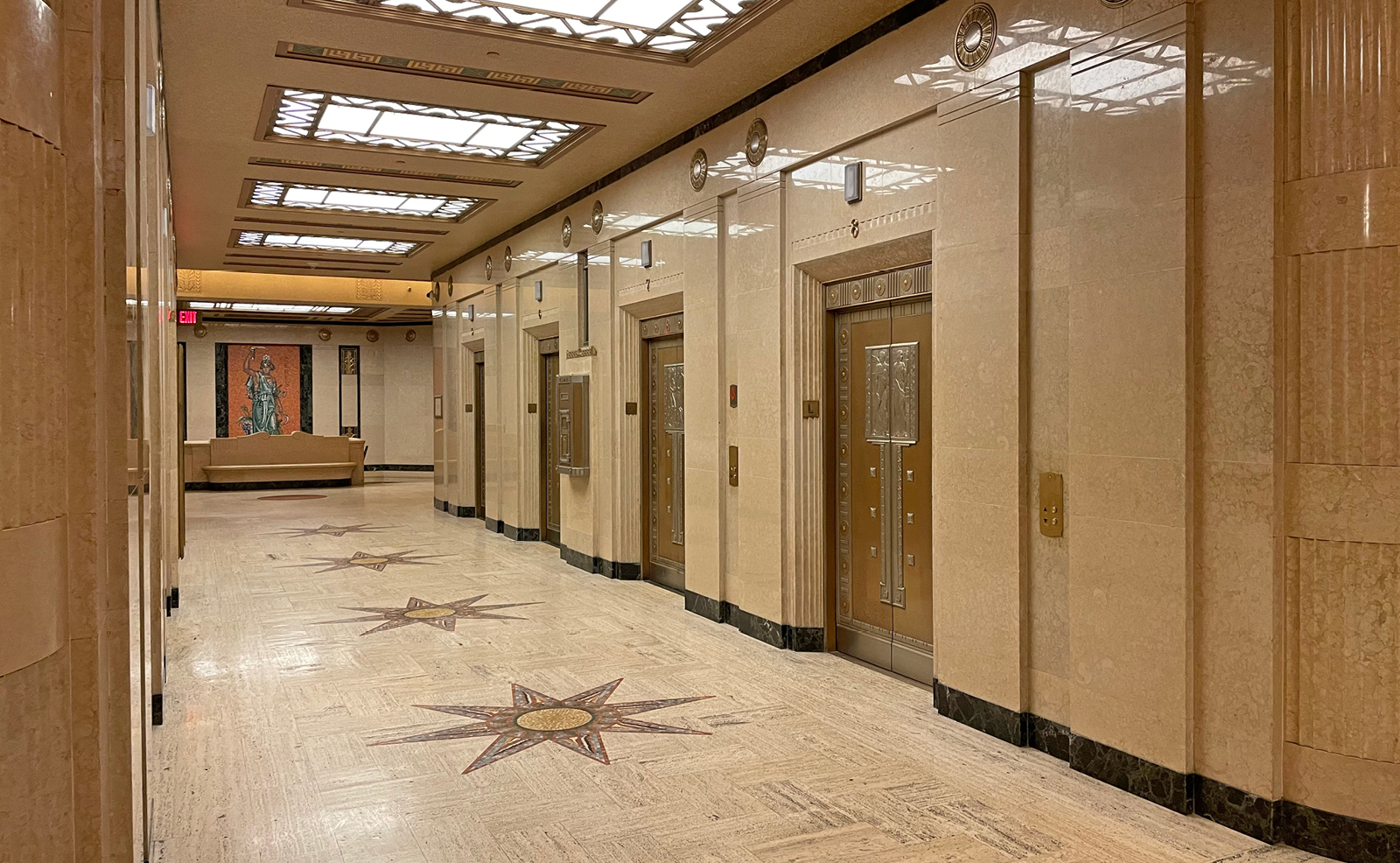
The Roman myth of Ceres explains the four seasons – which are depicted across half of the eight elevator doors. After Ceres’ daughter was abducted by Pluto, the king of Hades, Ceres was so heartbroken that she stopped attending to the Earth’s fruits and grains, which withered and died. Pluto was ordered to release Ceres’ daughter for six months each year. When her daughter returns in the spring and summer, the Earth prospers under Ceres’ care; when her daughter must leave in the fall and winter, the mother in her grief neglects the Earth.
-
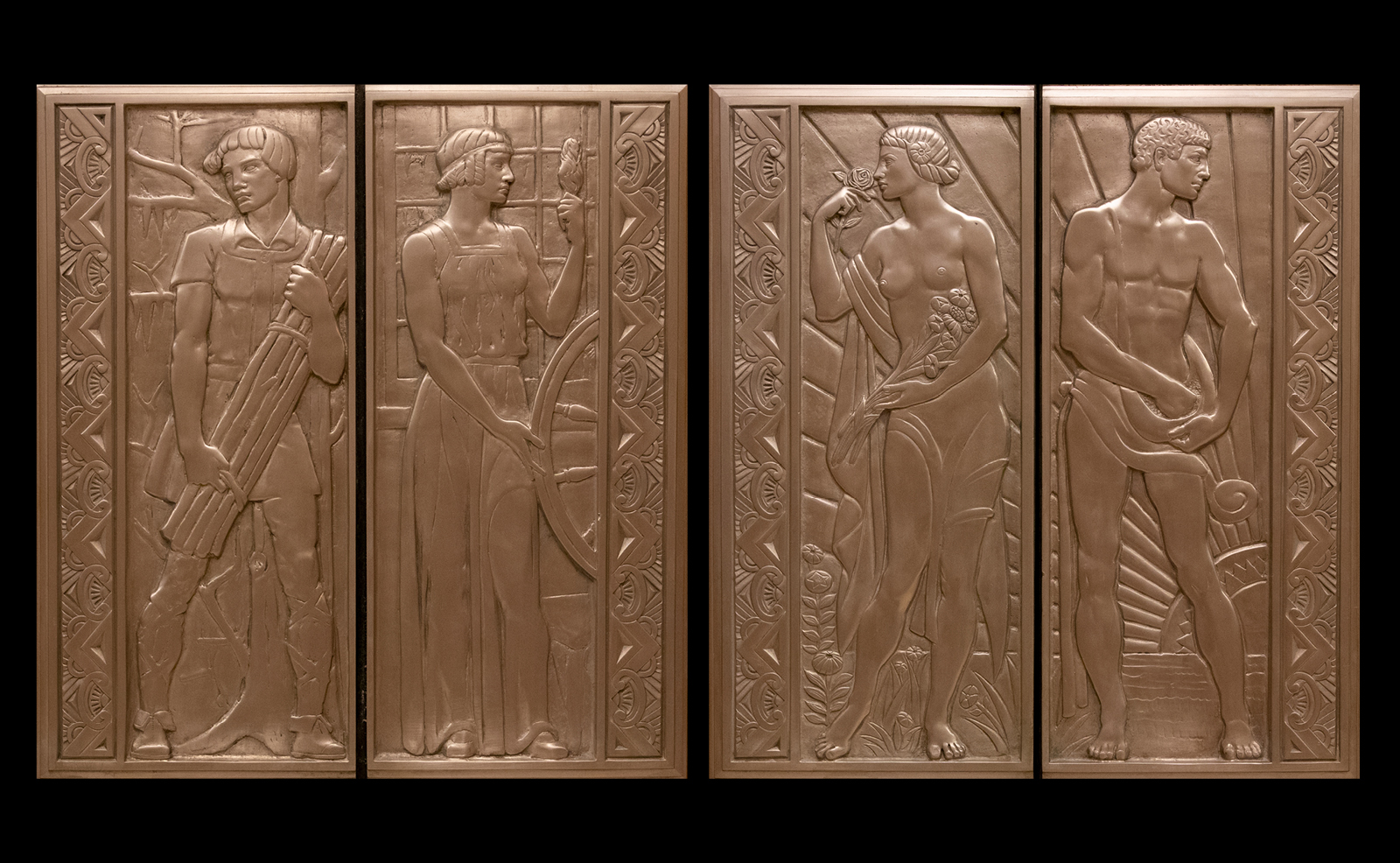
Each bronze-and-nickel elevator door features a bas-relief panel of male and female figures working on the tasks of that season.
WINTER (left). A man carries a bundle of firewood as icicles hang from tree branches behind him, while a woman prepares to spin wool into yarn. SPRING (right). A woman collects flowers, smelling one, while a man sows seeds. The sun rises from a lower corner, radiating in the background.
-
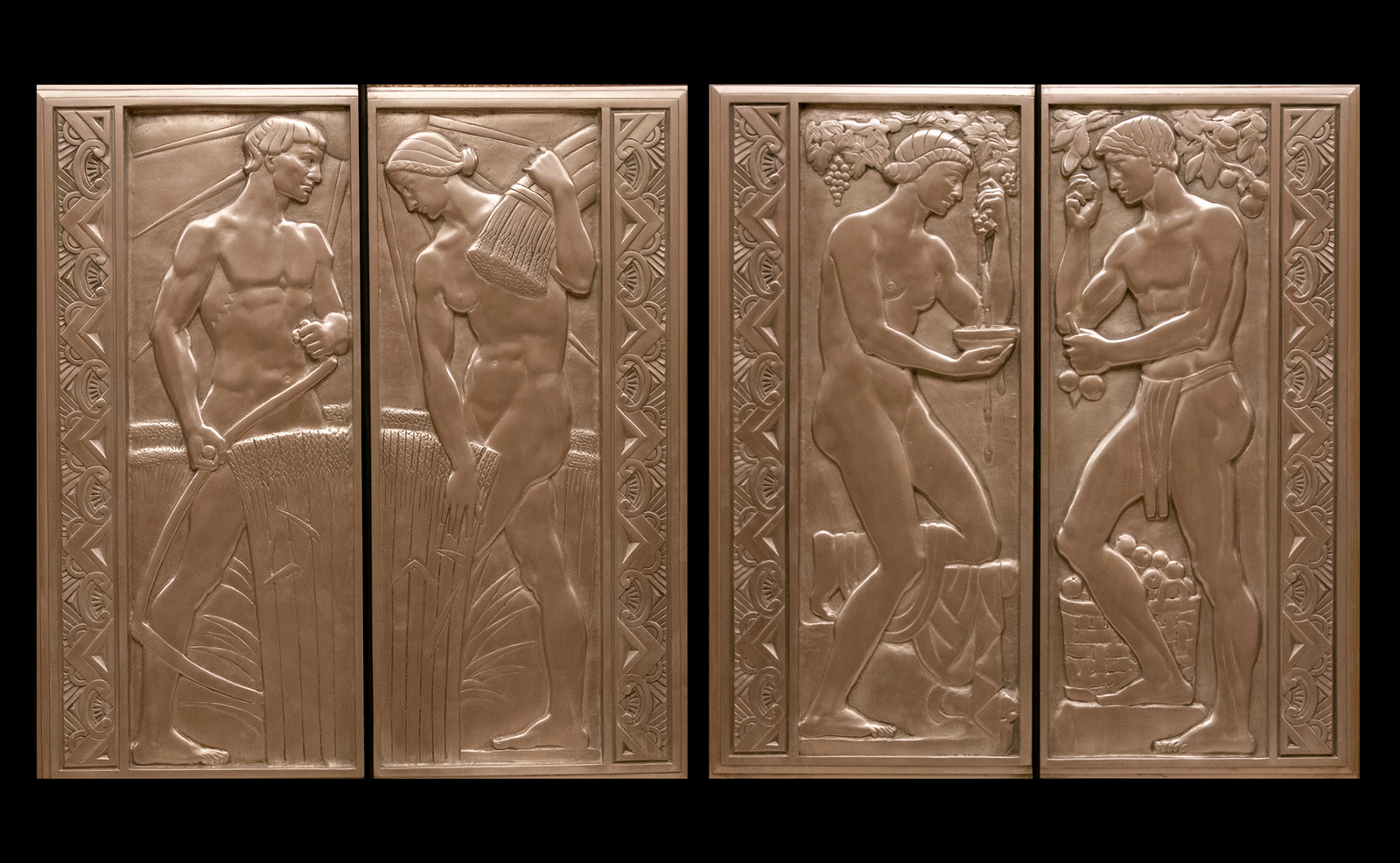
These carvings, as well as the elevator doors, were designed by sculptor Paul Fjelde, who also crafted the four panels of indigenous leaders housed in the Supreme Court’s Civic Center Lobby, one floor below. Fjelde started art school in Minneapolis at 14 years old.
SUMMER (left). With the sun positioned high in the sky, a man uses a scythe to sow a field of grain. A woman carries a sheaf of harvested grain on her shoulder. FALL (right). Exhibiting the autumn harvest, a woman makes wine from grapes, and a man picks apples.
-
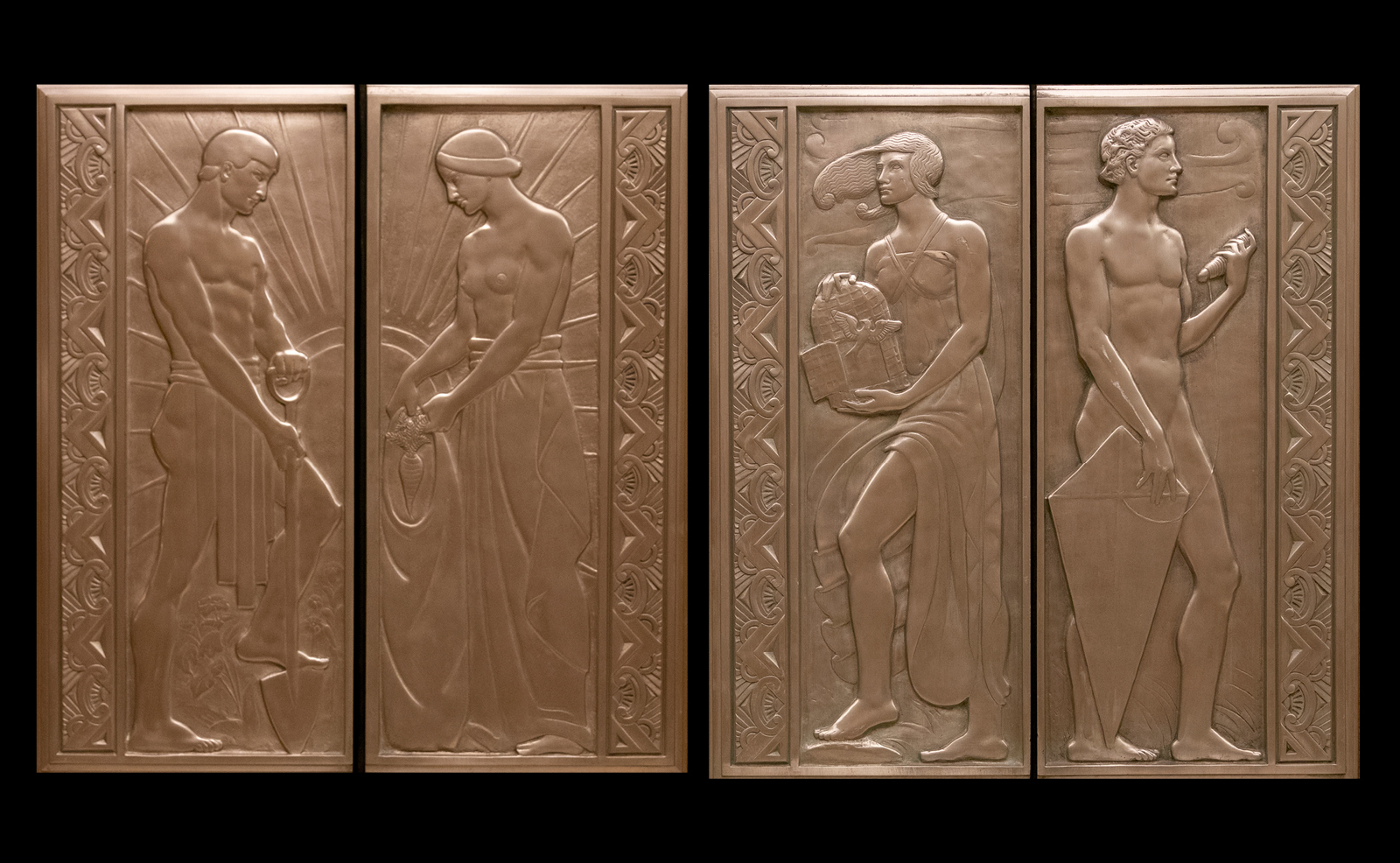
Across from the seasons are four elevator doors that signify what medieval alchemists believed were the sources of all matter – the elements earth, wind, water, and fire. The panels play off of “Harnessing the Elements,” the language appearing at Vulcan’s feet.
EARTH (left). A man digs into a field, and a woman gathers a harvest of root vegetables. WIND (right). A woman frees a bird from its cage, as the wind whips her hair northward. A man prepares to launch a kite.
-
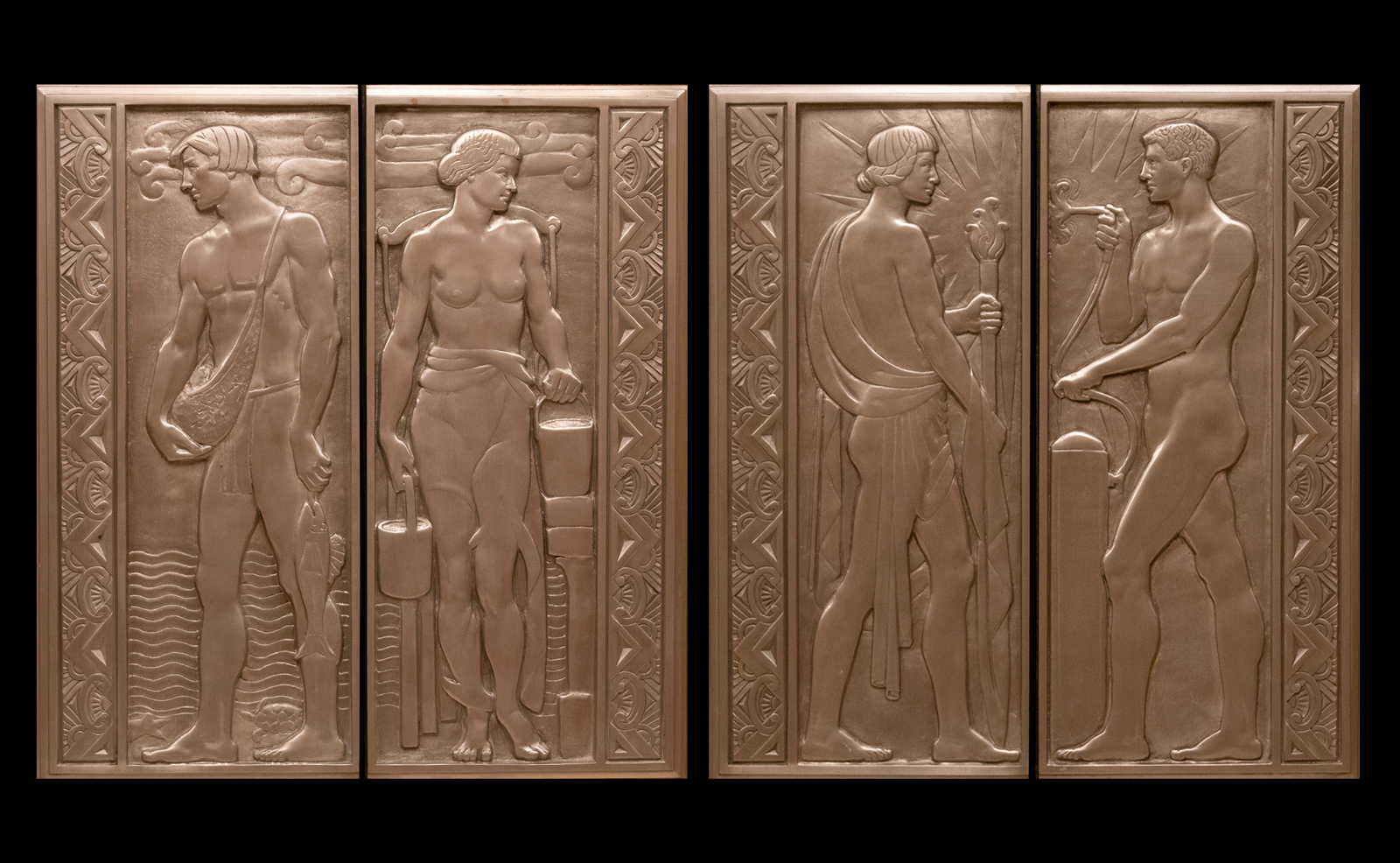
Art Deco design, prominent throughout the building, is exemplified by the precise and stylized forms on the door panels. Also, notice the positioning of the feet, similar to Egyptian art, which influenced Art Deco after King Tut’s tomb was discovered in 1922.
WATER (left). A fisherman heads home with the day’s catch, as his counterpart totes water in two yoked buckets. Water ripples behind them, as a turtle and starfish rest on the shore. FIRE (right). Fire serves as a power and light source, portrayed by a woman carrying a torch, and a man operating a blowtorch.
-
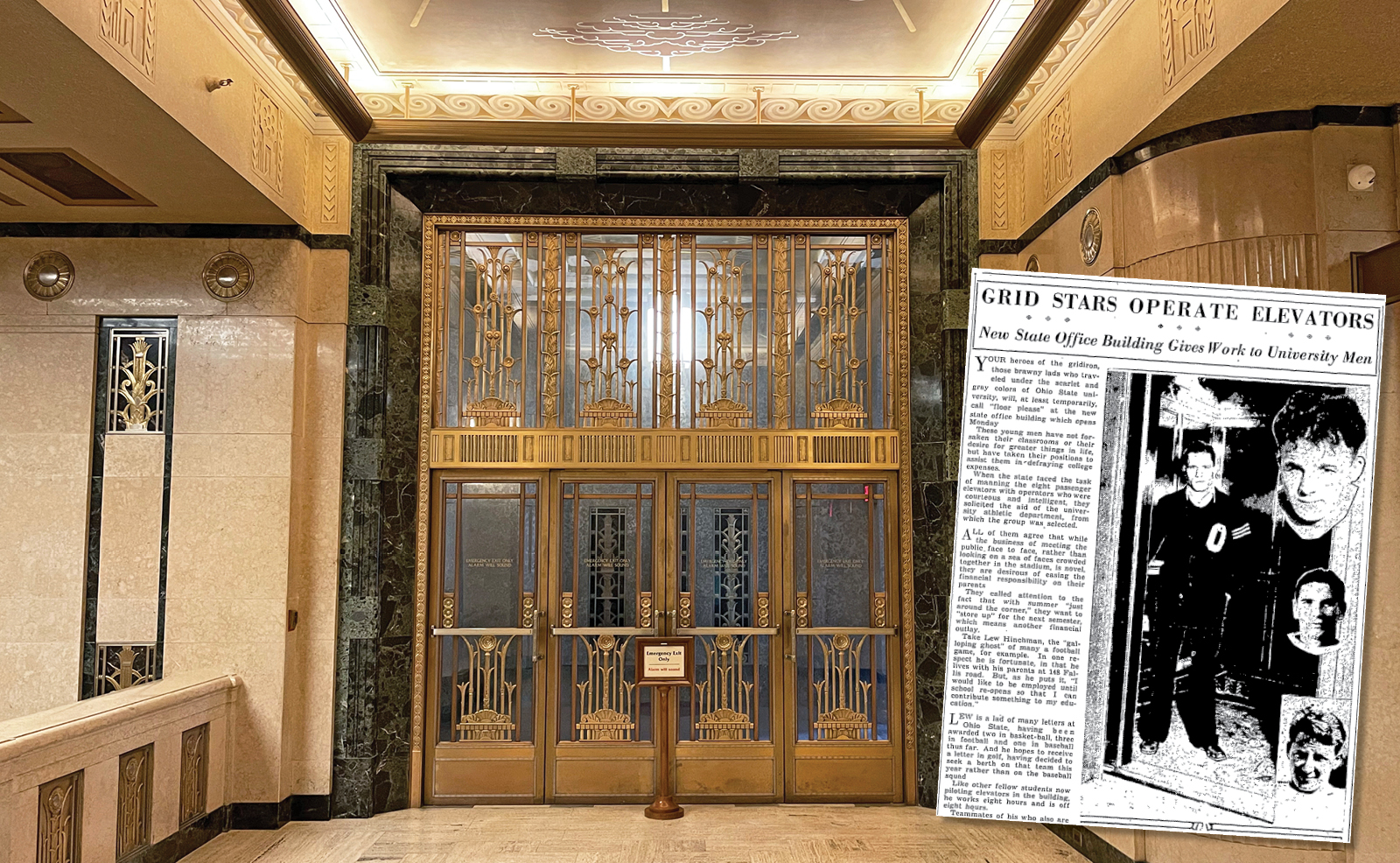
When first opening as the State Office Building, two entrances from Front Street flowed into the foyers that flank the elevator lobby. According to a March 27, 1933, article from the Columbus Evening Dispatch, when the state needed to hire “courteous and intelligent” elevator operators, it turned to the Ohio State University Athletic Department. “Your heroes of the gridiron, those brawny lads who traveled under the scarlet and gray colors of Ohio State university, will, at least temporarily, call ‘floor please’ at the new state office building, which opens Monday,” the article began.
-
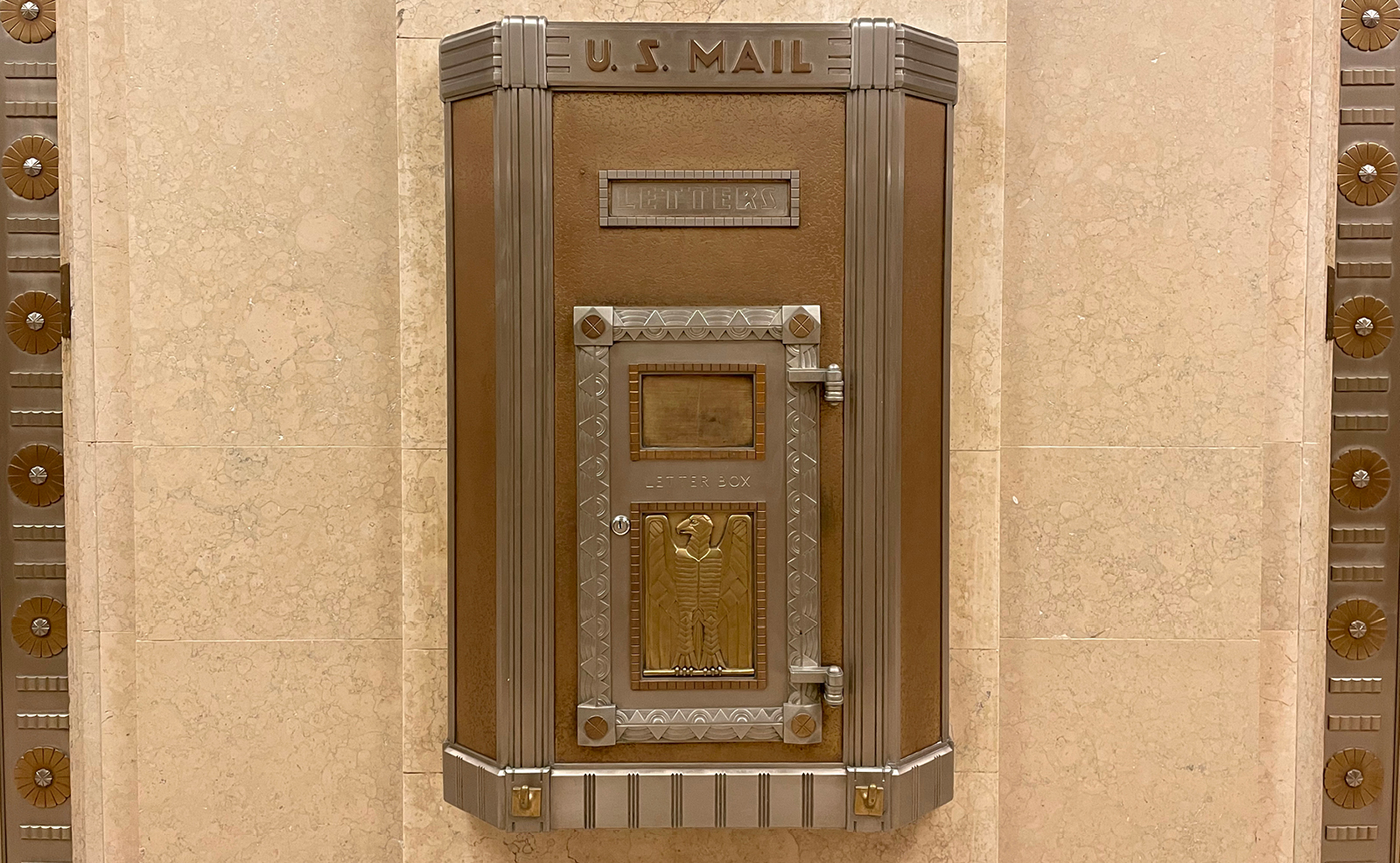
Even the mailbox designed for the building is elaborate. Many visitors ask, “Is it still in use?” It’s not. It illustrates, though, how the Moyer Judicial Center’s most mundane and functional items and areas – like a mailbox or an elevator lobby – received as much attention to their beauty and craftsmanship as the principal spaces, such as the Grand Concourse and main Courtroom. Even the elevator lobby is a work of art!














